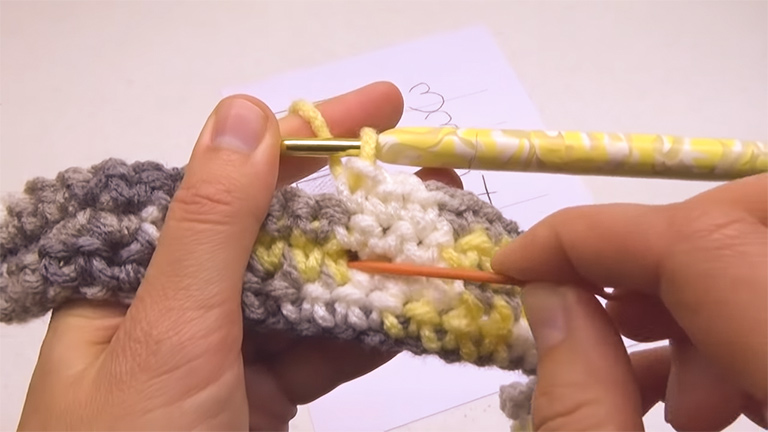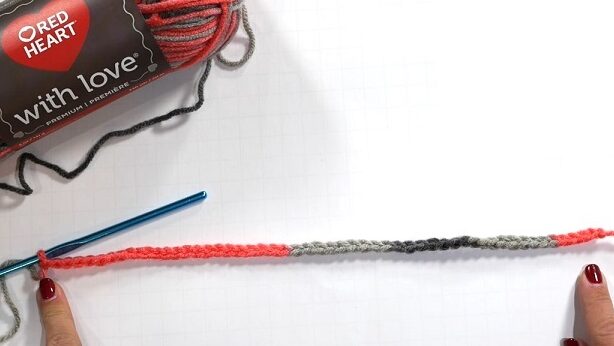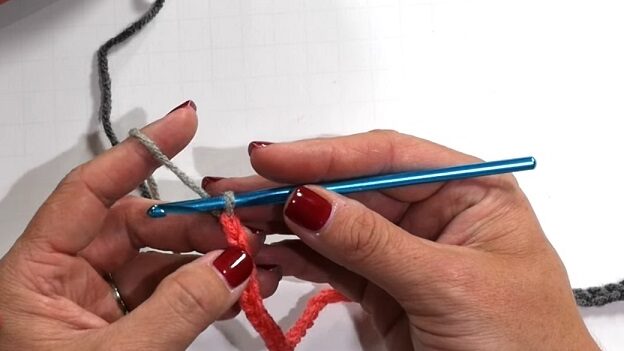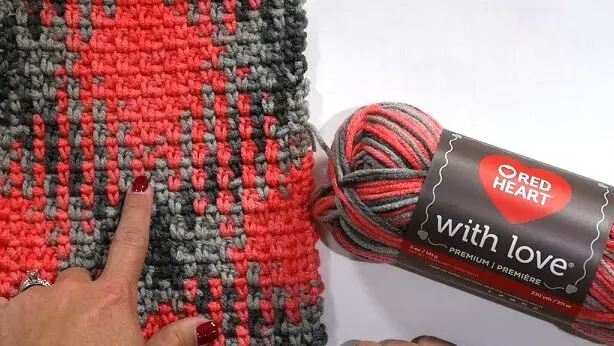In knitting when two or more color comes together to make a random or patterned (if planned) color spot it is called pooling. It is a special knitting technique that is used to make various colored patterns on the project. It is used to give your project a specific colored pattern or design.
What is Pooling Yarn
Pooling yarn is the yarn that is made for pooling. Pooling is a technique that uses several colors to make a pattern. Since normal yarns do not have multiple colors in a single strand they cannot be used in pooling. Variegated yarns have multiple colors in a single strand so it is used for pooling.

When selecting the yarn, you have to make sure that the colors are long enough so that when pooling it doesn’t change too quickly. Also, check to make sure that the color sequence is okay, meaning, every color is the same length on every other placement.
For example, if the yarn ball has 2 inches of red before changing to black you have to make sure that when the red starts again it is also 2 inches there. In the same way, you can check the black too. For color sequence, just checking the first two placements is enough. This makes sure that you don’t get irregular shapes if you are trying to do a pattern. Learn how to braid yarn.
How Do You Keep Yarn From Pooling?
If you are a not fan of yarn pooling and want to avoid it then there is a way to do that. You have to make sure that you are not getting the same color in a chunk. So alternate between skein when knitting and that should be enough to keep the yarn from pooling.
Color Pooling Yarn Knitting and Planned Pooling
Unlike normal knitting, yarn pooling requires a technique that is a little different. It is a very cool technique. It enables you to make different patterns or just to make some random color spot on your project which will look cool to see. Here I’ll talk about how can you use this pooling yarn and make something for yourself.
Materials That You Need to Have
Before you start pooling, you have to choose what yarn you want to use for the pooling effect. There are many variegated pooling yarns with many different colors. Choose one that you want to work with. Even when buying the yarns for making a wig or blanket, make sure you check everything that is mentioned above.
The way you can check without opening the yarn is, if it has a long enough one colored strand before changing to another color that is visible from outside then it is good for the pooling effect. But if there are many short colors in a single line then it is not for the pooling effect.
While you are at it, you can buy an I, H, G size hook too if you don’t have one since we will be using that to do our knitting. You can use whatever feels more comfortable and whichever works the best. You may need to switch the hook while knitting to make sure that your patterns line up properly.
Start the First Line
To start the first line, you have to knot the yarn to your hook. Sometimes on the yarn label, they mention which size hook you need to use. If you have a recommended hook size on your yarn ball label then use that size. Otherwise, the H size hook works pretty well.
The color of the knot or where you start is not important, start with whatever color you want. As an example, for this purpose, let’s say you wanted to knot from red, but after you knotted you had some black leftover on your strand. It doesn’t matter. That will make the total look even better.
After the knot, start making chains following the strand until you reach the end of a full-color repeat. So if you start from the grey then make chains until you reach the grey again. As for how many chains there will be is not constant. It depends on the yarn and how you crochet.

Make the 2nd Line with Moss Stitch Pattern
After finishing the first line’s chain, do one more chain with the next color. This one will be the first chain of your next line.

Now that you have your first chain of the 2nd line, you are going to do a moss stitch pattern to fill up the line. To do that, first, you have to do a single crochet in the 4th chain from the hook then do one chain. This is the moss stitch pattern.
Now from here on, you just have to repeat this single crochet and 1 chain but with 1 chain interval instead of four. So, skip one chain and do a single crochet and a chain then again skip 1 chain and do the same. Keep repeating that until you reach the full-color repeat.
After you reach the color repeat, even if there are more of the chain left you cannot do more chain on that line, it will ruin the yarn pooling. From here you have to shift the color sequence and decide you are going to do planned pooling or just normal pooling.
Planned Pooling
Now if you keep this up then you will get a straight line of yarn colors but no patterns or pooling. To do yarn pooling, you have to move the colors. So if your color moves one or two chains then it will make pooling. However, planned pooling crochet patterns are required to get additional attention always.
But if you are following a certain pattern then you need to move the colors according to the pattern. Here we will discuss how to make a diamond pattern with pink and different shades of grey with pink being the main color. This is called planned pooling.
Pink is the main color here because it had a longer strand than the other two colors. So if you are trying to make a certain color in the middle of the diamond you have to keep that in mind.

How to Shift the Color?
To shift the color all you have to do is add or subtract one chain from the previous line. But remember not to break the color sequence. To add a chain you just do one crochet and one chain just like before. To subtract, you just have to undo one chain and crochet.

What that will do is if you subtract one then it will carry on to the next line making it shift and if you add one then the next line will have one less chain of the same color making it shift.
Making the 3rd Line
After you add or subtract the crochet and chain, you need to move on to the next line. To move to the next line, add two chains on top of the previous one.

Now can continue to do moss stitch in one chain interval just like the last line and repeat that until you are done with your work.
Patterns Matching is Important for Planned Pooling
So if you are following the diamond pattern, then every line you need the colors to shift one chain to the front (if subtracted) or back (if added). Sometimes, it will happen that your yarn colors have not moved or it moved too much. This happens for the tension of the yarn.
In addition, for example, the tartan pattern is a cross-section of bands or threads that crosses horizontally and vertically. It is a historic pattern with a repeating color sequence. Whereas, argyle pattern is quite different and requires the same length of colors repeat.
Fixing the Chain Position
You can adjust the placement of the chain to make sure it shifts one front or back. To adjust it, just undo a few chains and make it tighter when crocheting. That will eat up enough yarn to make sure the chain comes back one or two chains from its original position.
In the same way, you can make it loose to go one or two chain front from its original position. So always look out for the placement of the colors to figure out if your patterns are going smoothly or you have to undo them and fix them. Changing the hook size also helps with placing the chain in the right place.
How to Figure Out Position
A good way to figure out whether the position is ok or not is by looking at the transition chain of the color. So each time your yarn changes color, it will be one chain front or back from the previous line.
Can You Knit With Pooling Yarn?
It is possible to do normal knitting with the yarn. There is a knitting technique that will produce pooling while knitting with purl and knit stitches. If you don’t want to make pooling then just doing normal knitting works too but the colors will be random.
Red Heart Pooling Yarn Patterns
The red heart is one of the bigger pooling yarn makers in the market. If you are looking for inspiration or patterns for your next project then they have some free patterns on their website and some eBooks too. You can always check them out.
Frequently Asked Questions
1. Do I need all three-size hooks for pooling?
Ans: Undoubtedly, hook size plays an important role in all over quality. It helps to have all three sizes but only one size will also do.
2. Can I do pooling with normal knitting?
Ans: You can do one type of pooling using purl and knit stitch but if you want to do a variety of things with it, then you have to learn the proper pooling way.
3. What are the most important things in pooling?
Ans: We can do a variety of yarn pooling, such as hand dyed yarn pooling, color pooling, linen stitch, argyle pattern, tartan pattern, etc. If we want to make color pooling, then we must choose the right types of multi colored yarns, and need to ensure consistent color repeat and color pattern.
In contrast, if it is linen stitch or granite stitch, the whole work will be in a different tension, followed by a crochet crowd.
In yarn pooling, color pool and color lengths are so important. What will be the next colour, what are the chain counts, are they all in the same order, etc. should also be taken into consideration.
4. What are the crucial things in color pooling?
Ans: Same dye lot is a record that is taken during the dyeing process to identify yarn that received the same coloration in the same vat at the same time. In color pooling, the starting chain and the entire color sequence are crucial. Whenever you make a few rows, you should always make sure that the color repeats between the first row and the previous row.
5. How to choose the right yarn?
Ans: Yarns do not all have the same characteristics – even yarns in the same weight category can vary greatly. There is no substitute for choosing the ideal pooling yarn for planned pooling works.
- Make sure the yarn you select is the same weight as the yarn recommended.
- Make sure the yarn has a high fiber content.
- If necessary, adjust the needle size to accommodate your needs.
Conclusion
Pooling is a special technique that sometimes goes against the rule of normal crocheting. But once you master it is very fun to use and can be used in various ways to make your projects look more beautiful than ever.
Leave a Reply